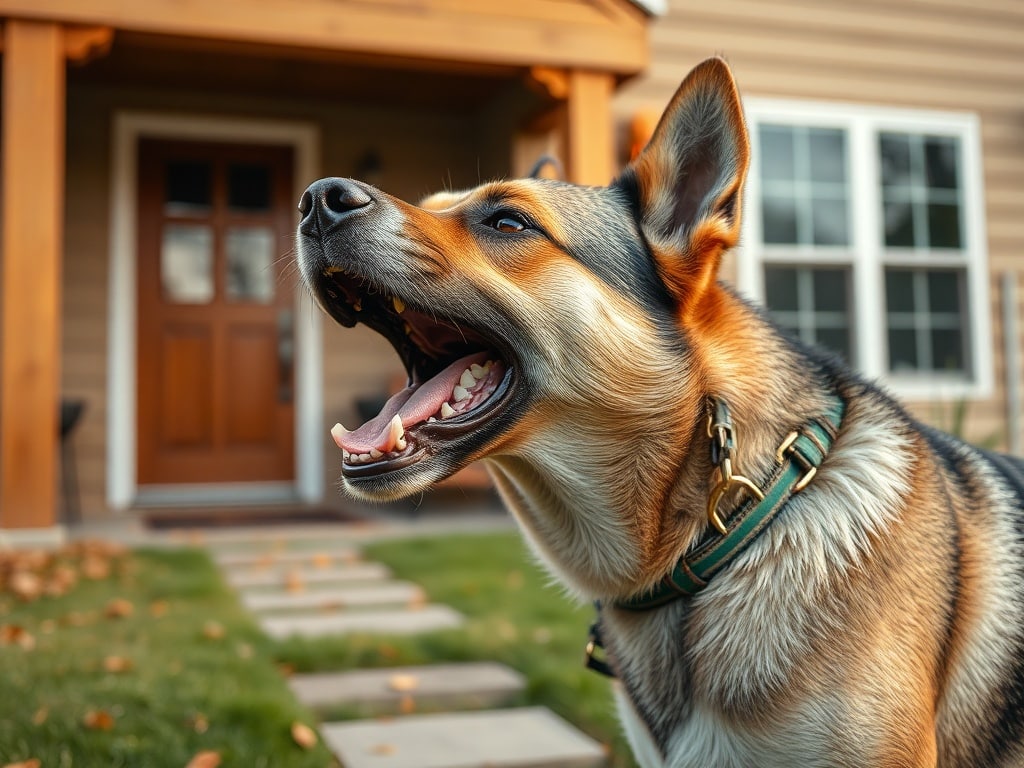Quiet on Set: How to Train Your Dog to Stop Barking on Demand
Imagine this: you’re settling in for a relaxing evening, maybe with a good book or your favorite show. Suddenly, your dog erupts in a frenzy of barks, shattering the peace. The mailman? A squirrel? A leaf blowing in the wind? It doesn’t matter – the barking persists. Excessive barking is a common canine conundrum, but thankfully, it’s one you can address with the right training and understanding. This comprehensive guide will walk you through the steps to teach your dog the Quiet command, transforming your home back into a haven of tranquility.
Understanding Why Dogs Bark
To effectively address excessive barking, it’s crucial to understand the underlying reasons why dogs bark in the first place. Barking is a natural form of communication for dogs, serving various purposes. So when thinking about how to stop a dog from barking, understand the root cause.
Common Reasons Dogs Bark
- Territorial Barking: Protecting their territory from perceived threats (people, other animals).
- Alarm Barking: Alerting you to something unusual or potentially dangerous.
- Attention-Seeking: Barking to get your attention, whether for playtime, food, or simply to be acknowledged.
- Frustration/Boredom: Barking due to lack of mental and physical stimulation.
- Anxiety: Barking in response to stressful situations (separation anxiety, loud noises).
- Greeting: Excited barking when someone arrives.
- Compulsive Barking: Repetitive, seemingly pointless barking, often indicative of an underlying behavioral issue.
Is All Barking Bad?
Not necessarily. Barking is a natural canine behavior. Some barking is acceptable and even desirable, such as a dog alerting you to a potential intruder. The key is to differentiate between normal communication and excessive, problematic barking.
Breed Tendencies and Barking
Certain breeds are predisposed to barking more than others. Terriers, for example, were bred to hunt and alert, making them naturally more vocal. Herding breeds may bark to control livestock or alert their owners to movement. Understanding your dog’s breed tendencies can provide insights into their barking behavior.
Identifying the Triggers
Pinpointing the specific triggers that set off your dog’s barking is essential for developing an effective training plan. What environmental changes trigger barking or will the arrival of a new person send Fido to barking overload?
What Situations Cause Your Dog to Bark?
- Specific people (mailman, neighbors).
- Other animals (squirrels, cats, dogs).
- Noises (doorbell, sirens, car alarms).
- Visual stimuli (moving cars, people walking by).
- Being left alone (separation anxiety).
Documenting and Analyzing Barking Patterns
Keep a record of when, where, and why your dog barks. Note the time of day, the location, what was happening before the barking started, and your dog’s body language. This data will help you identify patterns and triggers.

Environmental Factors Contributing to Barking
Consider environmental factors that might be contributing to the problem. Does your dog have a clear view of the street? Is there a lot of noise outside? Making adjustments to your dog’s environment can help reduce barking triggers.
Basic Training Principles
Before diving into the Quiet command, it’s important to understand the fundamental principles of dog training.
Positive Reinforcement
Positive reinforcement involves rewarding desired behaviors with treats, praise, or toys. This encourages your dog to repeat those behaviors. Avoid punishment, as it can create fear and anxiety, making the barking problem worse.
Establishing Yourself as the Pack Leader
While the concept of pack leader has evolved in modern dog training, it’s still important to establish yourself as the authority figure. This means being consistent with rules and boundaries, providing clear guidance, and meeting your dog’s needs for food, shelter, exercise, and mental stimulation.
The Role of Consistency
Consistency is key to successful dog training. Use the same commands every time, and ensure that everyone in the household enforces the same rules. Conflicting signals can confuse your dog and hinder progress.
The Quiet Command: Step-by-Step Guide
Now, let’s get to the heart of the matter: teaching your dog the Quiet command.
Introducing the Quiet Command
Start by identifying a situation that reliably triggers your dog’s barking. It could be the doorbell, a knock on the door, or seeing another dog outside. Have high-value treats ready.
Associating the Command with the Desired Behavior
- Trigger the Barking: Create the barking trigger (e.g., have someone ring the doorbell).
- Let Your Dog Bark (Briefly): Allow your dog to bark for a few seconds (1-2 barks).
- Say Quiet: In a firm but calm voice, say Quiet.
- Interrupt the Barking: Immediately interrupt the barking by holding a treat near your dog’s nose. Most dogs will stop barking to sniff the treat.
- Reward Silence: The moment your dog stops barking, even for a second, say Yes or Good and give them the treat.
- Repeat: Repeat this process several times, gradually increasing the amount of time your dog remains quiet before receiving the reward.
Reinforcing the Quiet Command
Practice the Quiet command in various situations and environments. Gradually fade out the treat lure, relying more on verbal praise and occasional treats. Be patient and consistent.

Alternative Techniques to Stop Barking
While the Quiet command is a valuable tool, there are other techniques you can use to manage barking.
Distraction and Redirection
When your dog starts barking, try distracting them with a toy or a game. Redirect their attention to a more positive activity.
Anti-Bark Collars: Are They Ethical?
Anti-bark collars are designed to deliver a punishment (e.g., static shock, citronella spray) when a dog barks. While some owners find them effective, their use is controversial. Many trainers and behaviorists consider them inhumane and potentially harmful, as they can cause fear, anxiety, and aggression. Positive reinforcement methods are generally preferred.
Natural Remedies and Calming Aids
For anxious barkers, consider natural remedies like chamomile or lavender, or calming aids like pheromone diffusers. Consult with your veterinarian before using any supplements or medications.
Managing Environment and Expectations
Modifying your dog’s environment and setting realistic expectations are crucial for long-term success.
Modifying the Environment
Minimize visual triggers by blocking your dog’s view of the street or using window film. Reduce noise levels by playing calming music or using a white noise machine.
Realistic Expectations for Reducing Barking
It’s unrealistic to expect your dog to never bark. The goal is to reduce excessive barking to a more manageable level. Be patient and celebrate small victories.
Addressing Boredom and Lack of Exercise
Ensure your dog gets adequate physical and mental stimulation. Daily walks, play sessions, and puzzle toys can help reduce boredom-related barking.
Consider the following too when dealing with accidents: [Help! My Dog Keeps Peeing in the House: Stop Accidents Now!]
When to Seek Professional Help
If you’re struggling to manage your dog’s barking on your own, it’s time to consult a professional.
Signs You Need a Professional
- Barking is excessive and relentless.
- Barking is accompanied by other behavioral problems (aggression, anxiety).
- You’ve tried various training methods without success.
Finding a Qualified Professional
Look for a certified professional dog trainer (CPDT-KA) or a veterinary behaviorist (DACVB). These professionals have the knowledge and experience to diagnose and treat complex behavioral issues.
Maintaining Success and Preventing Relapses
Once you’ve successfully trained your dog to be quieter on command, it’s important to maintain that progress and prevent relapses.
Reinforcing the Quiet Command Over Time
Continue to practice the Quiet command regularly, even after your dog has mastered it. Occasional reinforcement will help keep the behavior strong.
What to Do If Your Dog Starts Barking Excessively Again
If your dog starts barking excessively again, revisit the training steps and identify any new triggers or environmental changes. Be consistent with your training and seek professional help if needed.
Adapting Training as Your Dog Ages or Their Environment Changes
As your dog ages or their environment changes, you may need to adjust your training approach. Senior dogs may have different physical limitations or cognitive abilities. New environments may present new triggers. Be flexible and adapt your training accordingly.

